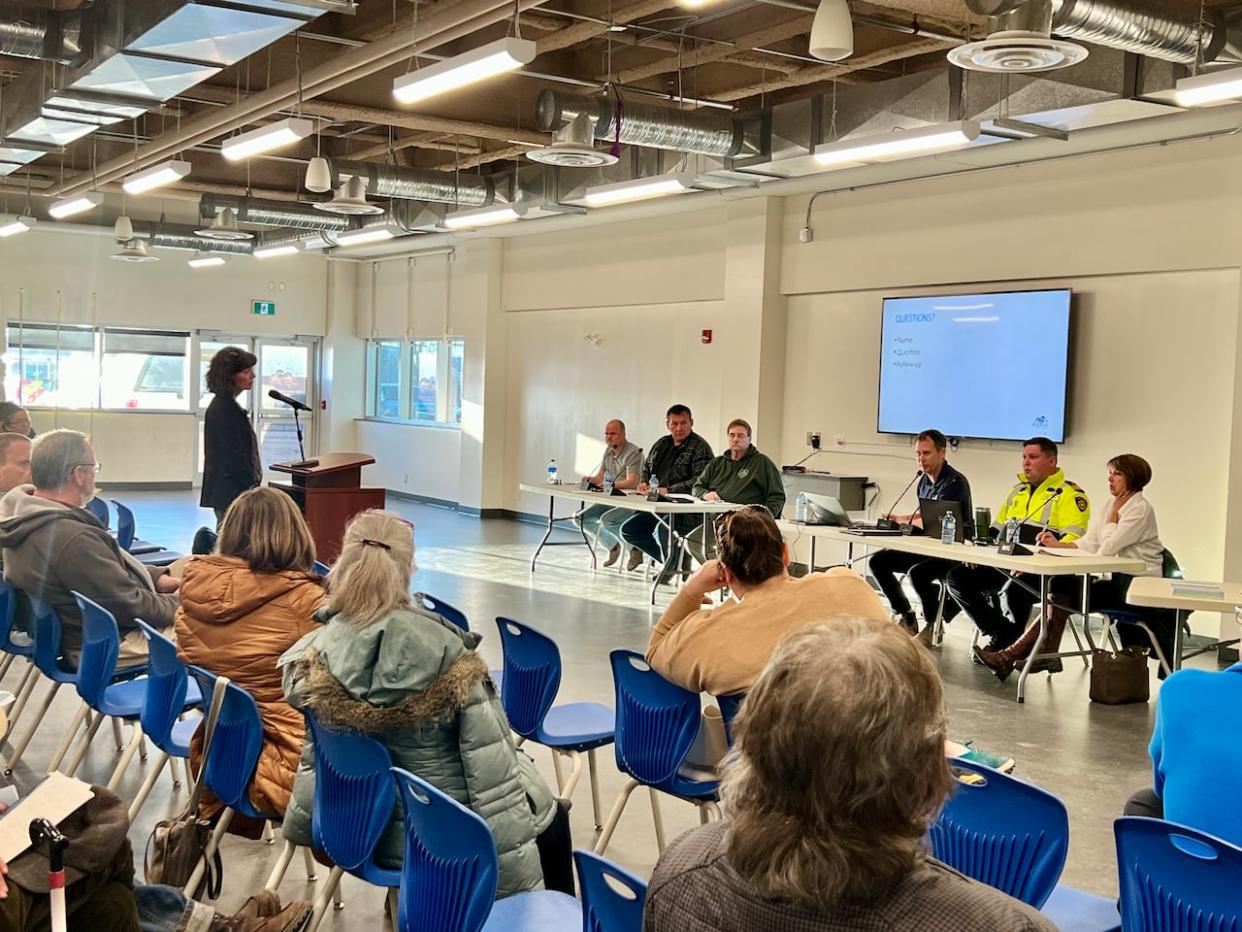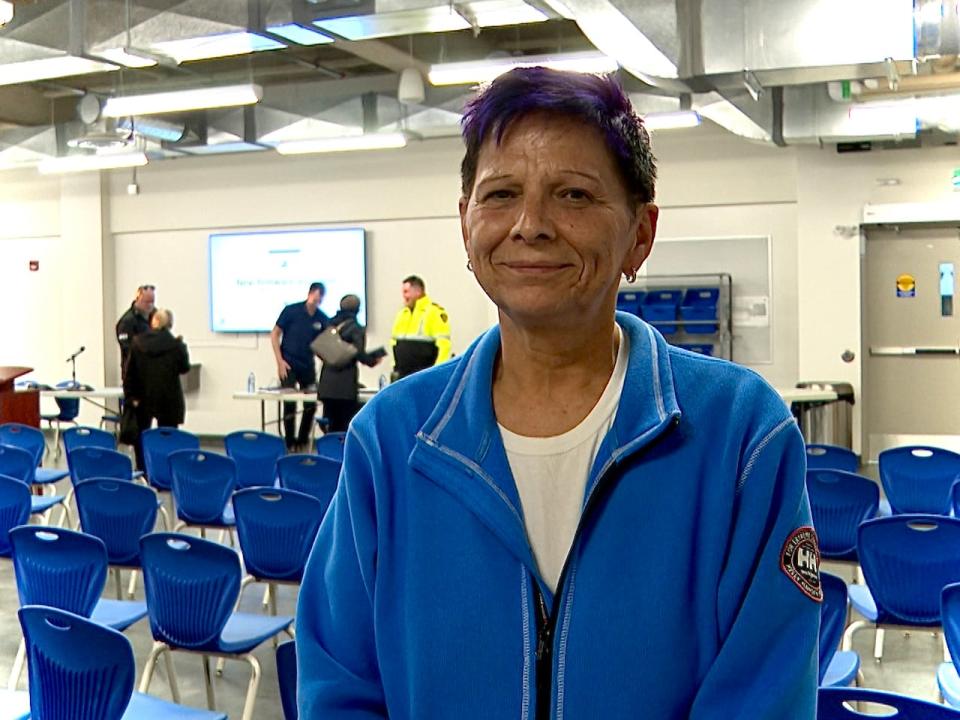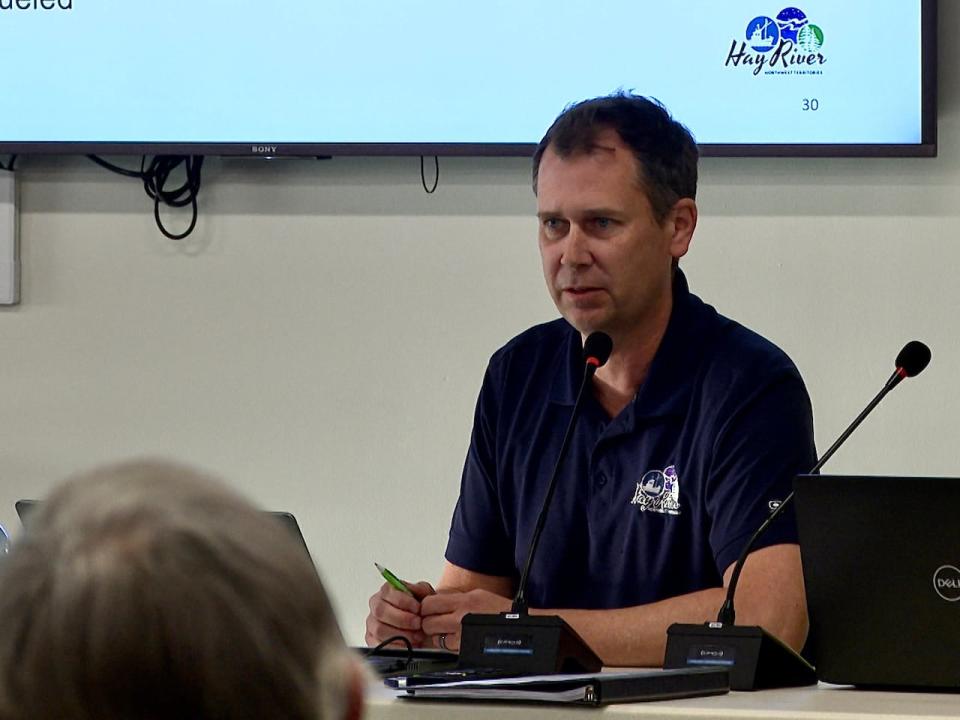Hay River announces new fire-smarting program, eyes better emergency communication

Hay River, N.W.T., has introduced a new fire-smarting program as the region prepares for another high-risk wildfire season.
At a public meeting about wildfire and flood preparedness Tuesday evening, town officials encouraged residents to put their hand up for the program. They also used the meeting as a chance to talk about the emergency communication issues that happened last year and what's being done to improve the situation this year.
Glenn Smith, Hay River's senior administrative officer, said the fire-smarting program offers assessments that identify potential fire hazards on properties and suggests ways to mitigate them.
"Sign up for an assessment. We'll go to the property, we'll give them a report saying this is where some of your issues lie. And here's how you might rectify them," he said.
This service also includes a seven-point plan and supports community members by providing free waste pickup.
Better communication
Hay River resident Cindy Caudron said she attended Tuesday's meeting to get more information on the town's preparedness plan.
Caudron volunteered to help during last year's evacuation by going door to door to notify residents of the emergency.

Cindy Caudron went door to door last year to inform residents about the town's evacuation. (Carla Ulrich/CBC )
"We spent our whole entire days from about 7, 8 o'clock in the morning till 11:30, 12 o'clock at night," she said. "Because the people in their homes didn't have any communication or didn't know what was going on.
"Communication's important — that's what the people want. We just want communication."
She also said she was happy to learn about other mitigation activities such as forest scanning for hotspots, and that she's feeling more confident about the upcoming fire season compared to the previous years.
"I think that there's a lot more co-ordination, better communication. And that they're actually doing a lot of work behind the scenes that I had no idea about," she said.
"All the way around, people will have some level of comfort — that we're going to be in better shape this year."
Caudron also highlighted ongoing concerns within the community, such as ensuring adequate preparation for seniors and the vulnerable population. She said friends and neighbours should start communicating now on how to handle an evacuation if one happens.

Glenn Smith, Hay River's senior administrative officer, said the town is trying to improve communication ahead of this year's wildfire and flood season. (Carla Ulrich/CBC )
Caudron also said there is a need for more volunteers for key roles, such as communication and assisting others.
"Hopefully it will inspire some people to jump in and help out where we can. Look after the neighbours, make sure they're okay and aware if we need to go" she said.
Smith recounted challenges from the previous year's fire season, particularly the lack of timely notifications during the evacuation process.
"We do rely on other governments to communicate wildfire risks," he said, referring to the territorial government's department of Environment and Climate Change (ECC). "ECC is taking more steps now to get direct communication to the local community governments, as well as changed thresholds for when those notifications would come out.
"I think that's excellent, because that allows us to properly implement our communication and preparedness plan," he said.
Smith also talked about strategies to strengthen the infrastructure to withstand emergencies, particularly focusing on fibre and satellite connectivity which is crucial for communication.
The issue was highlighted during last year's evacuation, when phone lines went down in the region at a time when the emergency situation was rapidly changing.
"We've got a lot of different communication channels that we issue our standard preparedness type communication through, as well as N.W.T. alert system and door-to door-notifications if it does get to an order situation," he said.
'Be prepared'
Hay River is currently in flood season. Smith said water levels are significantly lower than usual, reducing the risk of flooding, but conditions like ice jams are unpredictable and could increase risks unexpectedly.
Smith said last year's wildfire burned over 500,000 hectares but also created a natural firebreak around the community. Despite this, the region is entering its third year of drought, potentially leading to even drier conditions than those experienced last year.
"Be prepared," Smith said. "Listen to communications that are coming out from government officials. And take steps at the private level."
Smith encouraged residents to create household emergency preparedness plans and to be ready for any emergency situation at all times, this includes keeping vehicles fuelled up to avoid any delay in the evacuation process.
Smith said the town is committed to holding more meetings in the future, recognizing their increased importance in the wake of recent severe climate events.

